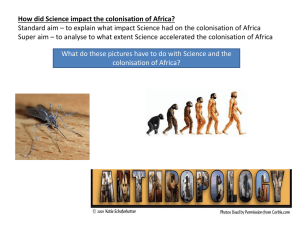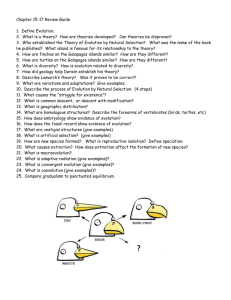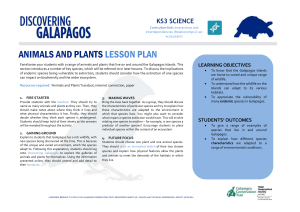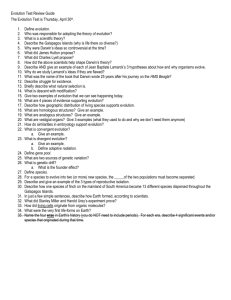1A1 Colonisation MSWord Lesson Plan KS2 Science
advertisement
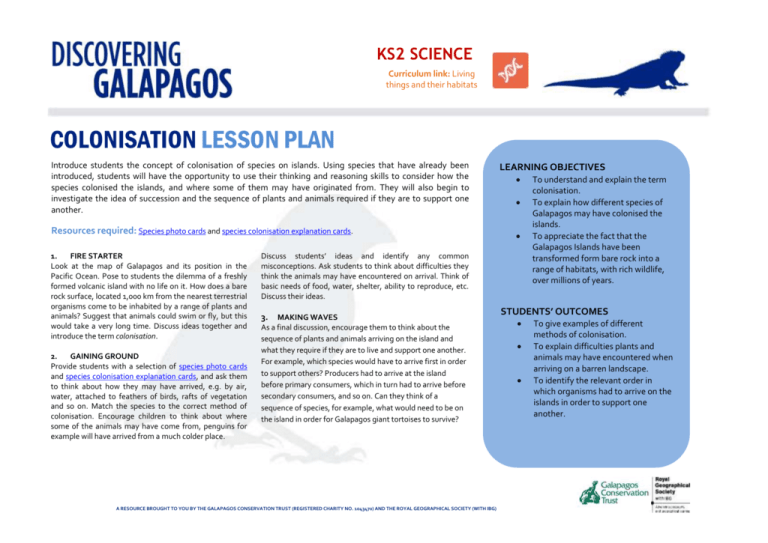
KS2 SCIENCE Curriculum link: Living things and their habitats COLONISATION LESSON PLAN Introduce students the concept of colonisation of species on islands. Using species that have already been introduced, students will have the opportunity to use their thinking and reasoning skills to consider how the species colonised the islands, and where some of them may have originated from. They will also begin to investigate the idea of succession and the sequence of plants and animals required if they are to support one another. Resources required: Species photo cards and species colonisation explanation cards. 1. FIRE STARTER Look at the map of Galapagos and its position in the Pacific Ocean. Pose to students the dilemma of a freshly formed volcanic island with no life on it. How does a bare rock surface, located 1,000 km from the nearest terrestrial organisms come to be inhabited by a range of plants and animals? Suggest that animals could swim or fly, but this would take a very long time. Discuss ideas together and introduce the term colonisation. 2. GAINING GROUND Provide students with a selection of species photo cards and species colonisation explanation cards, and ask them to think about how they may have arrived, e.g. by air, water, attached to feathers of birds, rafts of vegetation and so on. Match the species to the correct method of colonisation. Encourage children to think about where some of the animals may have come from, penguins for example will have arrived from a much colder place. LEARNING OBJECTIVES Discuss students’ ideas and identify any common misconceptions. Ask students to think about difficulties they think the animals may have encountered on arrival. Think of basic needs of food, water, shelter, ability to reproduce, etc. Discuss their ideas. 3. MAKING WAVES As a final discussion, encourage them to think about the sequence of plants and animals arriving on the island and what they require if they are to live and support one another. For example, which species would have to arrive first in order to support others? Producers had to arrive at the island before primary consumers, which in turn had to arrive before secondary consumers, and so on. Can they think of a sequence of species, for example, what would need to be on the island in order for Galapagos giant tortoises to survive? A RESOURCE BROUGHT TO YOU BY THE GALAPAGOS CONSERVATION TRUST (REGISTERED CHARITY NO. 1043470) AND THE ROYAL GEOGRAPHICAL SOCIETY (WITH IBG) To understand and explain the term colonisation. To explain how different species of Galapagos may have colonised the islands. To appreciate the fact that the Galapagos Islands have been transformed form bare rock into a range of habitats, with rich wildlife, over millions of years. STUDENTS’ OUTCOMES To give examples of different methods of colonisation. To explain difficulties plants and animals may have encountered when arriving on a barren landscape. To identify the relevant order in which organisms had to arrive on the islands in order to support one another.

